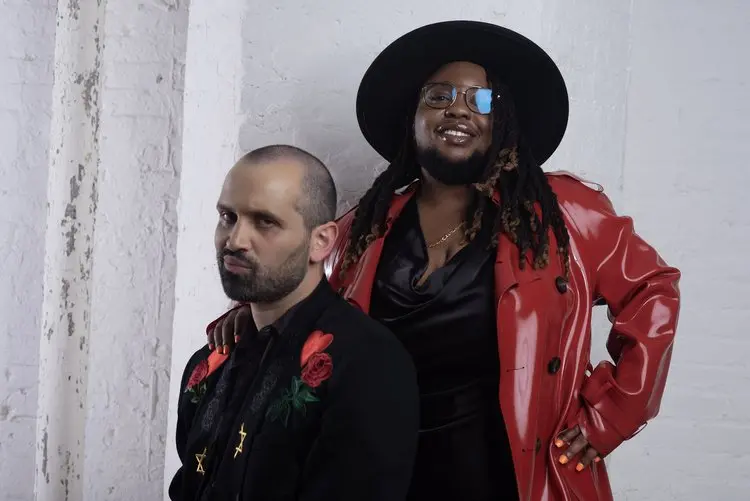
By Suzanne Trimel
People organizing prison books programs have quietly gathered in basements, storage spaces, and the back rooms of secondhand bookstores for the last seventy years, reading letters from incarcerated people and sending books in return. Books Through Bars: Stories from the Prison Books Movement, a new collection of essays, is being published today by the University of Georgia Press. The book is a collection of inspiring stories from the prison book movement and a guide for people who want to swell its ranks.
One of its two editors is Moira Marquis, who manages the Freewrite Project based in PEN America’s Prison and Justice Writing program. Moira has worked with Asheville Prison Books, the Prison Books Collective in Carrboro, N.C. and cofounded Saxapahaw Prison Books. A former teacher of history and literature in high schools and colleges who holds a doctorate,
Moira talked about how she became involved as a volunteer sending books to prisons, why it matters, and the challenges in a conversation with Suzanne Trimel, senior advisor on PEN’s communications staff
- The introduction to the book says “mailing books is mailing care”—oftentimes care that has been systematically denied to people in prison. How do books make a difference in the lives of incarcerated men and women?
I have always loved reading. When I was young, reading was an escape for me. I grew up in New York and I loved reading books about country life. I was obsessed with My Side of the Mountain. I wanted to live in a tree! As I got older, reading fulfilled a lot of different things for me: I go to books when I’m confused, to answer questions about my life or the world, to keep me company, and to inspire me to imagine myself otherwise and see the world in new ways. Reading is the primary way I educate, entertain and motivate myself. If I were locked inside a small room, perhaps with no window, and no books it would wreck me. With books, I think I could survive. I have never had to live in a jail or prison but I speculate that with a ready supply of good books I could distract, entertain and learn enough to keep myself from spiraling into profound malaise. This is what I think of every time I send a book to someone inside. It’s a little life raft. It’s a gift of hope for another future. It’s a salve for the pain of isolation. This is what a lot of people told us when they submitted narratives to the Reading Between the Bars report on prison book censorship. Reading is the only thing a lot of people inside have.
- The right to read inside prisons was widely denied (except for the Bible) until successful lawsuits in the 1960s and 1970s changed that. Now, prisons are quietly trying to limit access to books inside prisons by turning to ebooks and tablets. Why is that a mistake?
Tablets are not bad but they shouldn’t replace paper books for a lot of reasons. Tablets can break, the content isn’t free, but (most importantly for me) the content is highly limited. We recently acquired a list of the titles available on JPay tablets–one of the major telecommunications companies that control prison communication services like phone calls and tablets. I haven’t gone through it thoroughly but there are no titles on Martin Luther King, Jr. and 86 titles on Jesus. I love to read, as I said. But, if the only things I had to read were trashy westerns and Christian books I would lose it. These companies regularly tout the large numbers of materials on these tablets, bandying about the numbers as if that tells the whole story. But, looking at the lists you can see that the content is very narrow.
Reading on a tablet is also costly. We know that incarcerated people are disproportionately very poor when they enter prison but being incarcerated actually makes people poorer because it’s so expensive to be locked up. You have to pay high prices for everything from toilet paper to phone calls and you’re only making cents an hour–if that. Texas, for example, forces people to work but does not pay them at all.
So, for all these reasons, denying people free, paper books is truly criminal.
- What drove your activism and involvement in the prison books movement? You volunteered in Asheville, N.C. and then started a prison books program also in N.C. What inspired you?
Mutual aid is an intervention that I can really get behind. It makes me feel good to give things away for free. Everything costs something these days and our relationships are often caught up in who’s paying for what and how much things cost. It is freeing to break from that and just give people some books. I also love free markets and Food Not Bombs but I gravitate to prison books cause I’m a reader.
- You write: “Most people imprisoned in this country have not had access to quality education, opportunity, and cultures of care.” Literacy rates are low among the prison population (60% are functionally illiterate) Since it’s clear that public schools have failed many among this group why don’t we make a greater effort in prisons on the education front, do you think? Do you think this is possible?
It seems very obvious that if we truly wanted to help people improve their lives we would invest in them. Yet, we don’t. Prison culture is overwhelmingly punitive. Everything is a punishment in prison from the food, to the lack of medical care to the regulation of movement. In my experience, carceral authorities are highly suspicious of education. This is reflected in the amount of effort that goes into censoring literature. It’s staggering to me that prisons spend more effort preventing people from having access to books than they do in offering education. Most educational programming in prisons is offered through partnerships with local colleges and independent nonprofits. But, these relationships are frequently fraught and the loss of programming privileges is very common. Instances with longstanding and consistent educational programming are few and far between and are often in place because of wardens who are exceptional in centering education. This shouldn’t be the case, as we know that education is the one thing that has been consistently shown to help people once they’re released.
- A teacher of writing and English, you’ve also been a volunteer tutor inside prisons to help incarcerated people pass reading tests so they could enroll in community colleges. Is that widely available in this county and if not, why not?
Sadly it’s not. In fact, I just spoke with the program I worked with the other day and they’ve lost their privileges to tutor inside that facility. It’s truly sad for me. Some of my most gratifying teaching moments have been when someone has struggles and finally gains confidence and comprehension in their reading. They smile so broadly. They are so proud of themselves. I truly don’t understand why anyone would want to deny that to someone. I can speculate on all kinds of reasons and I’m sure there’s not just one but I’m the kind of person who would try to overcome whatever challenges or obstacles are in the way for delivering that kind of programming. Literacy is directly tied to longer and better lives. That’s an amazing, holistic gift to give to someone.
- If you had a chance to design a prison that is committed to reading, literacy and education, where would you start? Are there even examples to follow here in the United States or in another country?
Even if a prison were to offer all the things we’re talking about here it wouldn’t be a good place. The issues are too multidimensional and all-encompassing. When I started doing prison books I taught public school and I had bright students who had a documented need for glasses that hadn’t received them for three years. I had students who were single-handedly taking care of sick, elderly parents. I had kids whose only food for the day was eaten at school. There is a syphoning of money towards punishment when the money should be frontloaded onto serving people who are working fulltime and can’t make ends meet. We know that when you’re poor things cost more. People are charged more when they have less. This results in an inability to meet basic needs–like buying books and pencils, backpacks and winter coats. There is no justification for why we continue to do this as a culture. The funding needs to shift.
- You write: “It’s not that hard to intervene in systems of oppression through small, everyday actions that can make a very real difference in other people’s lives.” This book cites so many moving examples that affirms that. Which means the most to you?
I get so happy any time anyone intervenes. It’s those small moments when we care for each other that make it possible for me to see a different world. Any time we see a person instead of a policy, humanize each other in the face of regulations, we break from the systemic oppressions we’re constantly upholding through reenactment. Over time, these little cracks weaken the foundation of the system at the same time as building something new–a structure of care.
- What have you learned about the racial dynamics in prisons through your work and what is the outlook that books can help bring about change?
First, its important to know that the majority of incarcerated people are white men. Native men are incarcerated at the highest rate, then Black men. The incarceration of people of color is disproportionate but, white people are still the most incarcerated. It’s not a problem only for people of color. It’s a white people problem, too. It’s an ‘all of us’ problem. Prison cultures foster racial animosity. Prisons create an extreme version of the conditions of scarcity we all live within. When there’s not enough to go around, people start fighting with each other to get what they need. In this culture, race has been the primary way people are taught to perceive otherness. When someone is “othered” they are dehumanized and it becomes easier to throw them under the bus so we can get what we need. Mutual aid is about undercutting these dynamics through sharing. We share what little we have and in that process we subvert the othering. This humanizes us as well as the people we’re told to other. It also pushes back against those arbitrary distinctions and that helps us all to see that we’re actually in this together. Instead of seeing other people who are barely getting by as the problem, we begin to see the system as the issue.
- You wrote PEN America’s report last year Reading Between the Bars on prison book censorship and documented the staggering number of books banned in prisons. Why? What can citizens do to stop this?
I started writing that report because I experienced the same issues trying to get people the creative writing anthology The Sentences that Create Us that I’d had doing prison books work. Florida banned The Sentences that Create Us (a PEN America/Haymarket Books essay collection on prison writing) as a security threat. Michigan prisons won’t let people have the book because Haymarket Books is an “approved vendor.” Prisons in Georgia throw the books in the trash when I try to send it to people and their prior approval forms have lapsed. It makes me mad that so much effort is devoted to preventing people from accessing a book that everyone says is inspiring and is helping them in their creative self-expression. I wanted more than evidence and the report confirms that what I and other prison book volunteers have experienced— a systemic effort, across all prison systems (federal, state, private) to prevent people from accessing reading materials. I have a lot of work in process to challenge this but people not directly involved in this work can do a lot to support it. Prison authorities don’t want bad press. They dislike being disliked. So, everyone can sign onto our email campaigns, like the social media posts and sign petitions when they circulate. I know there’s a lot of bad faith about “clicktivism” but in the case of prisons, it does a lot.
- The prison book movement is a social movement that has quietly galvanized people across the country for 70 years, working with shoestring budgets in basements and community spaces. In your experience, what motivates people?
There’s a lot of different reasons. It’s a great way for quiet, bookish people to get involved in service. Some people have incarcerated family or friends. Prison books work is socializing, too. You stand around and chat and talk about books while you read letters and answer requests. I think there’s probably as many different reason as there are people involved.
- What books are most commonly requested by incarcerated people?
Dictionaries are the number one request. People teach themselves how to read from the dictionary. In the absence of educational programming and literacy support, dictionaries are the only resource people have. This makes it infuriating that prisons ban dictionaries. On July 22, 2022 Texas prison authorities banned the second edition of Merriam-Webster’s Visual Dictionary, because of an image of a weapon. The ban on visual dictionaries is especially cruel, given they are designed to help people with basic or no literacy learn to read. Other dictionaries Texas has on its banned list include, a concise medical dictionary and Dictionary of Painters, From A-Z, both because of nudity, an English visual dictionary, designed for non-English speakers, because of ‘sexually explicit images’ and Mosby’s Medical Dictionary because of a nude child.
Learning to read from the dictionary is a time-honored tradition in US prisons. Malcolm X, in his autobiography, famously wrote about learning how to read from a dictionary while in prison.
- Your goal in editing this collection is to inspire people to get involved in the prison book movement, despite the censorship you’ve gathered evidence of. Do prison book programs help push back against censorship? How?
Prison Book Programs have been working to get books to people inside for a long time. It’s been increasingly challenging work since prisons have quietly reinstituted a lot of censorship and are using “approved vendor” policies to deny people free and used books. If more people join prison book programs, establish new ones or just support our work we can stop the censorship that’s preventing incarcerated people from reading. There’s the old adage, there’s more of us than them. It’s true but only if people show up.
- Most people probably assume prisons have libraries. Is this a challenge, too, in prisons?
Prisons have libraries. They’re even less funded than public school libraries and public community libraries. They may not have staff. Sometimes, the only librarian is an incarcerated one. They can’t purchase books without funds and they’re prevented from accepting donations. In my experience, the collections are largely westerns and romance novels. There are some prison librarians working hard to change these things but not as many as are needed. They are also subject to the same censorship as individuals requesting books. We surveyed carceral librarians for the Reading Between the Bars report and 70 percent reported that they wanted to purchase items for their library that are on banned lists.
It’s also impossible for people in solitary to get to the library. They can’t leave their cells. When I speak with prison librarians it reminds me of my time teaching public school. They care a lot but they are so stressed, harried, under resourced and trying to serve as many people as possible with so many limits. There is not enough capacity in prison libraries to meet the needs of everyone locked up in this country.










